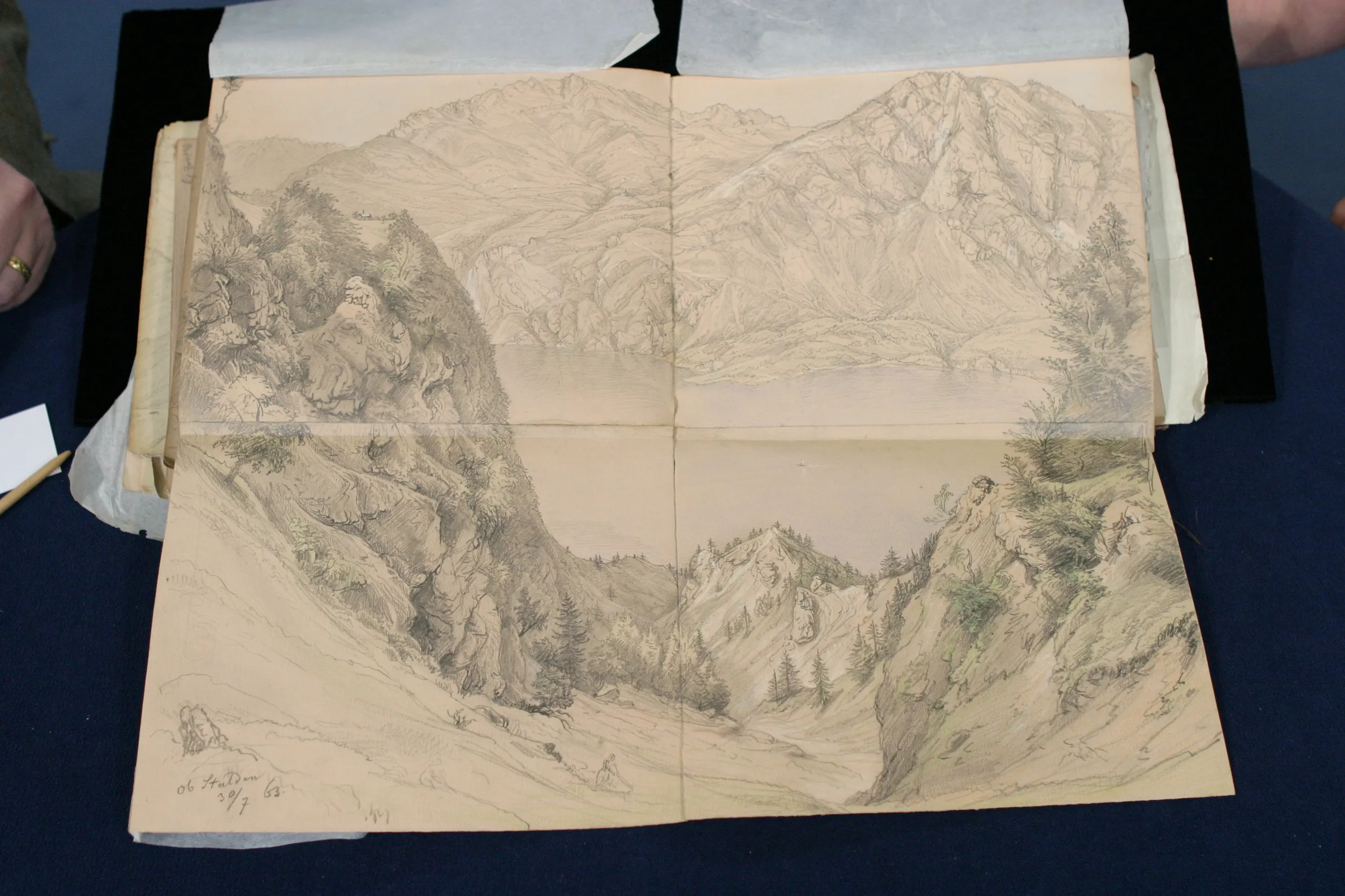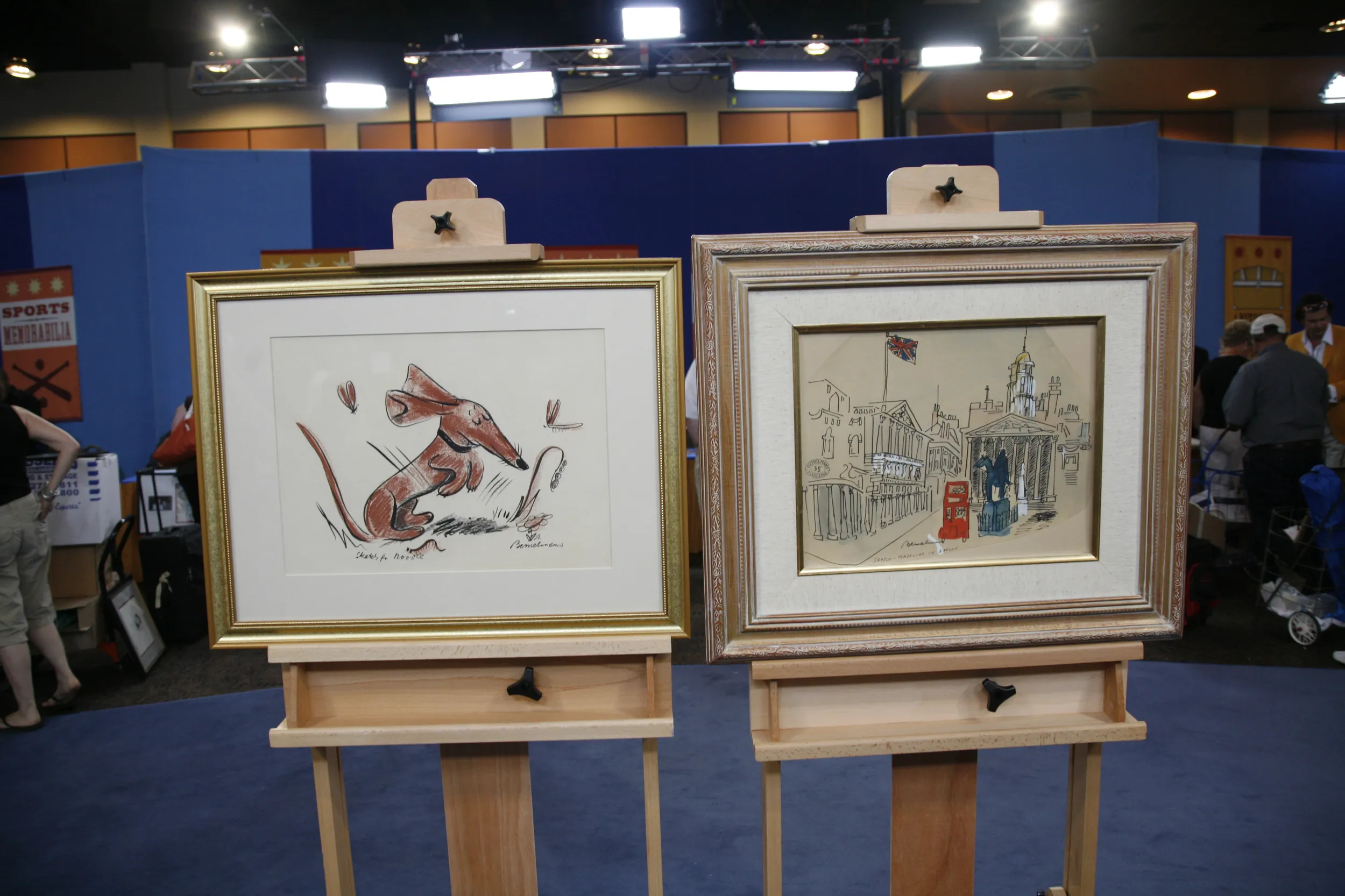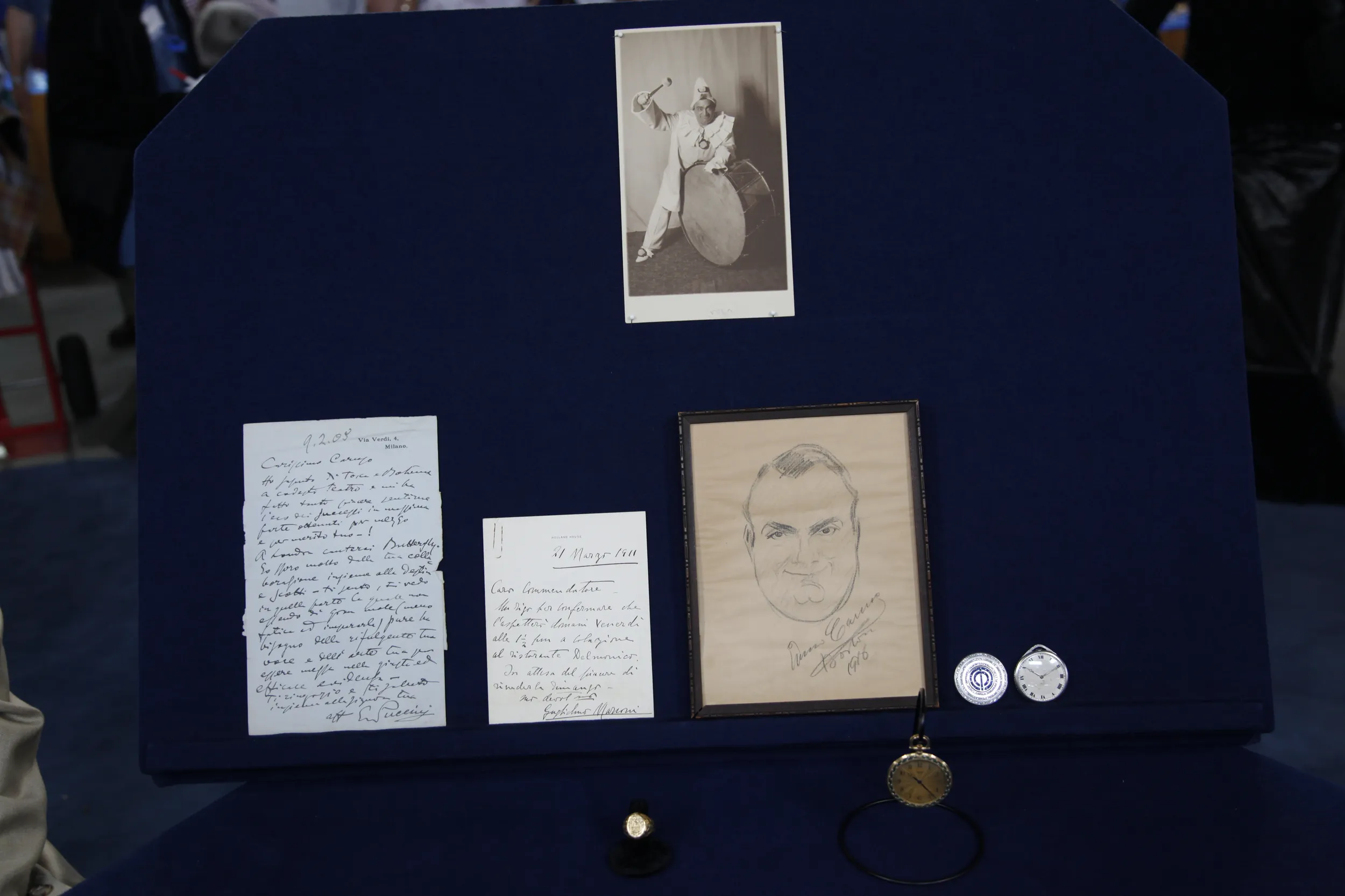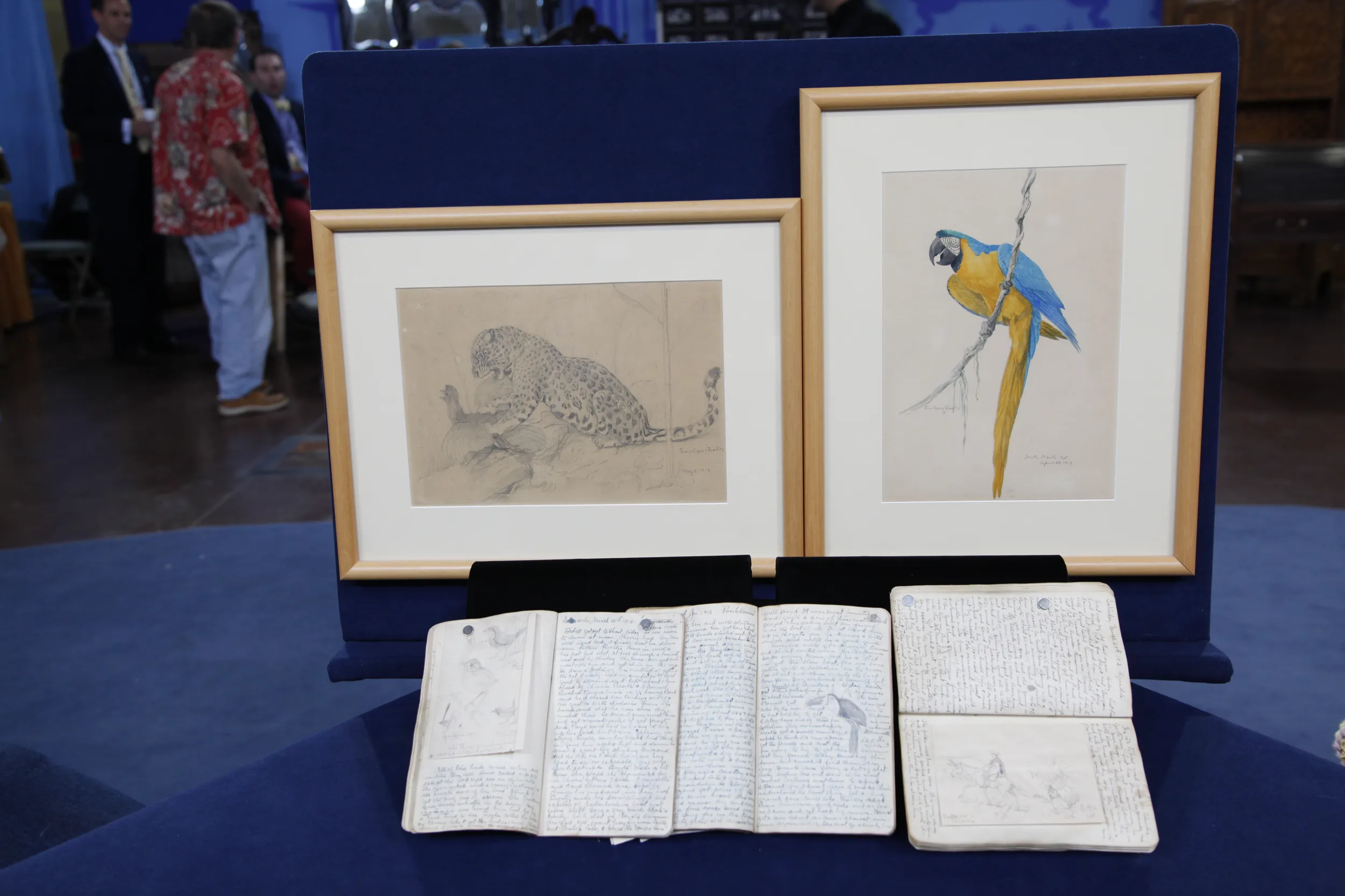Zao Wou-Ki Etchings and Drawing, ca. 1950
GUEST: This lithograph and this, as it turns out, drawing—I thought it was a lithograph when I bought it-- I purchased at an auction house which was going out of business in Baltimore. I'm thinking ten years ago, but it was a while ago. And they had brought all this stuff out of their attic and out of their basement and it was just piles of things everywhere. And they were auctioning things off as fast as they could. By the end of the day, they couldn't even keep up with what they had, so they started instead of selling off individual pieces, they were forming piles of stuff.
APPRAISER: Wow.
GUEST: And I bought a couple of piles of stuff. And in one of the piles were these two. And it wasn't until I got home that I was piling through and I thought that they looked interesting. Because this is written in script, I was able to look the guy up and realized that he was a relatively well-known artist. I was thrilled that I found him. This little guy over here, I was at an auction house in Washington last year, and this was sitting in a frame in a corner somewhere and just because I happened to have owned this one, I knew what that was. And so I was very excited and I ended up bidding on it and bought it for 50 bucks.
APPRAISER: And you do a lot of collecting and buying...
GUEST: I run around and buy stuff, mostly works on paper. And I accumulate, much to my wife's chagrin... (both laughing) A lot of little things. But I'm particularly proud of these.
APPRAISER: As you know from the added inscriptions, these are by Zao Wou-Ki. This would not have been written by the artist. Somebody else was kind enough, probably the collector before you, to write that in. Now, he was actually born in Beijing in 1921. And although he certainly comes out of the Chinese tradition, even as a young student of art, he was also very interested in the Western tradition. So although he was learning calligraphy and traditional Chinese arts and Chinese styles, he was looking at Western art books and looking at what was going on in the late 19th and early 20th century. So even as a young student, he was interested in Cezanne, Picasso, and he was thinking about those. So, in 1948, he moves to Paris. And this is his dream come true. And he's working and studying there as well. But he keeps that old influence. He keeps that Chinese heritage. So he starts with a representational style that's very calligraphic in terms of its line. I mean, that's especially true of this ink drawing that you've got here. But it's also true of the prints. Now, you've got two prints, both of them are etchings. And the easy tell for that is you've got this very obvious indentation. You need a fair amount of pressure to make an etching and that's a plate mark. You've got three works that are relatively early. He's still representational. But the end of the '50s, he's gone to pure abstraction. So we know just by looking they've got to be from the late '40s or early 1950s. For the prints, were we to check in the catalogue raisonnè, we could come up with the exact dates. The drawing is actually dated down here. And it looks like '51. The etchings are multiples. They're not going to be as rare, but they're still very desirable. You've got a figural piece, which is not something he's all that well known for, so they're more unusual. And it's really quite a sizable piece. You've got primarily the black ink, but you've also got this red plate tone that brings out some extra oomph to it.
GUEST: Okay, so that's not... I thought they had some sort of deformation. It's not, it's supposed to be there
APPRAISER:. That's part of the print. And then you've got this one that's more typical of his works with the landscape. Both of these are quite striking. Were you to sell these at auction today, you would be looking at about a thousand to $1,500 for the smaller. You'd be looking at $1,500 to $2,000 for the larger.
GUEST: Wow, that's a lot.
APPRAISER: Having said that, this is a one-of-a-kind work of art; it's a drawing. Now, you said you got the lot for $100 for all these pieces?
GUEST: No, no, $10 for the stack.
APPRAISER: $10 for the whole stack of works by all different kinds of artists. And the rest of them are probably worth about $10. I think you came out okay. If you were to sell this at auction today, this drawing would probably net you about $20,000 to $25,000.
GUEST: No.
APPRAISER: Yes. You have a great collecting eye.
GUEST: Really? Really, seriously?
APPRAISER: I'm not making that up.
GUEST: It's wonderful.
APPRAISER: Thank you so much for bringing it.
GUEST: Thank you for telling me. I'll need an armed guard to go home. (laughs)

$22,500 - $28,500 Auction
Featured In
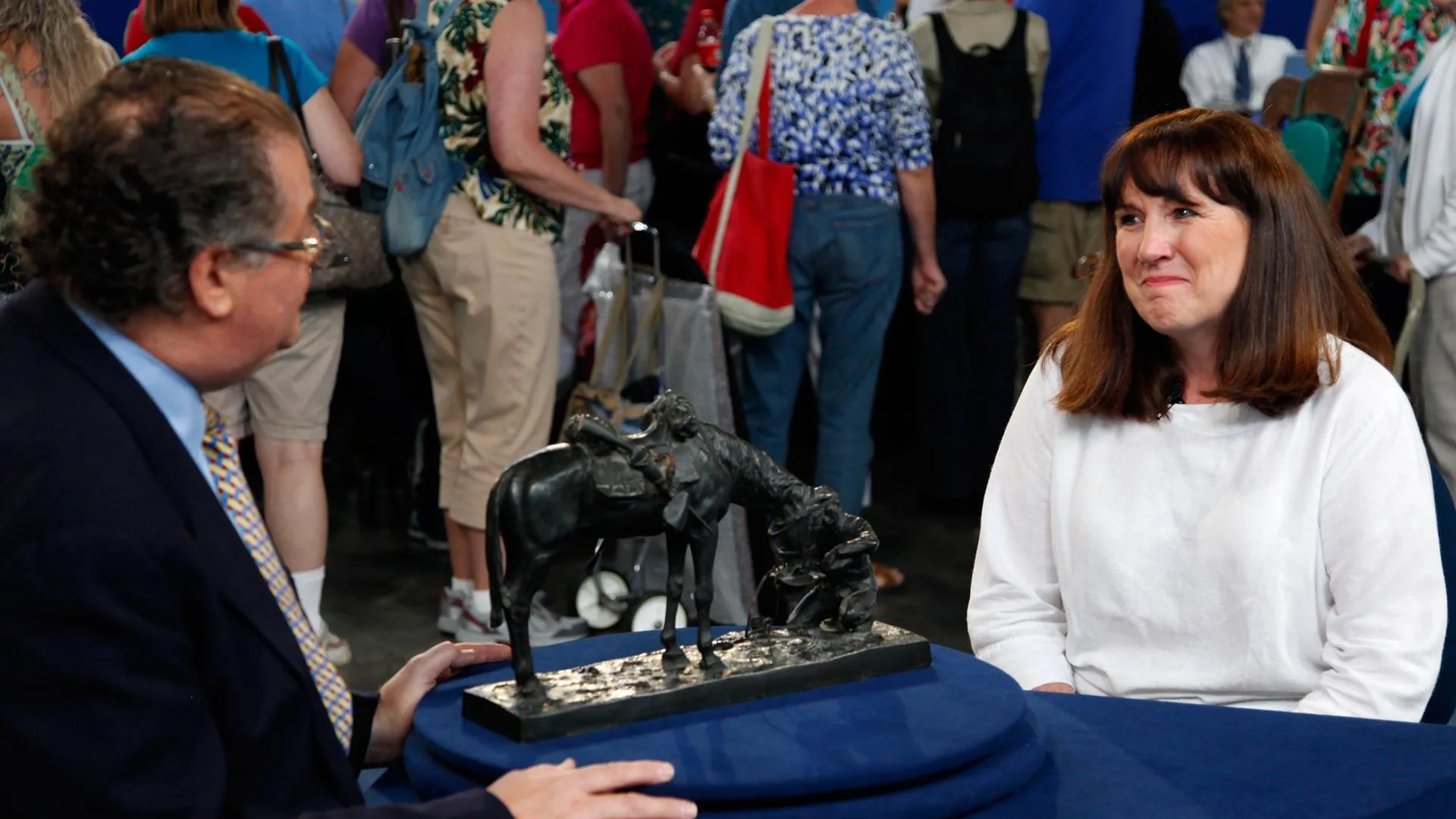
episode
Washington, DC, Hour 2
ROADSHOW investigates missing New Deal-era artwork with the U.S. GSA.
Drawing
Understanding Our Appraisals
Placeholder
